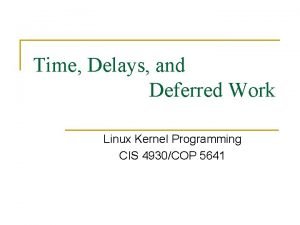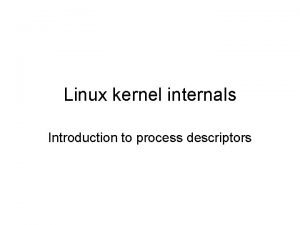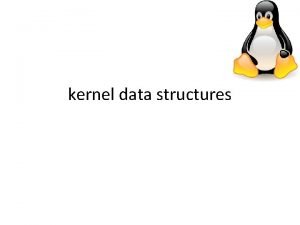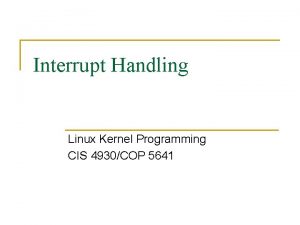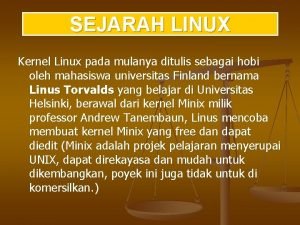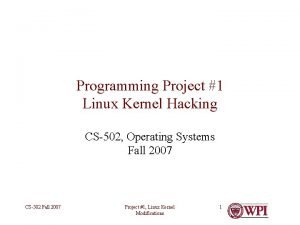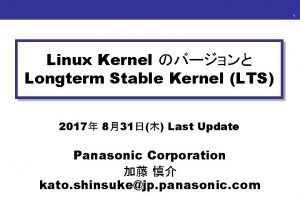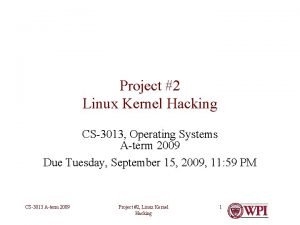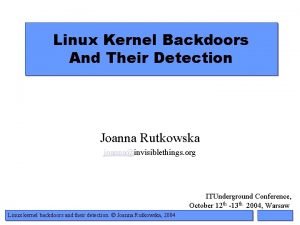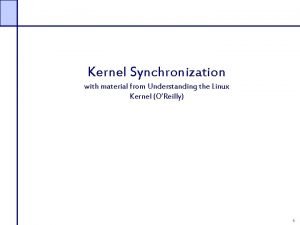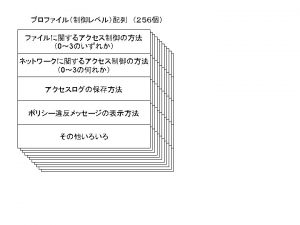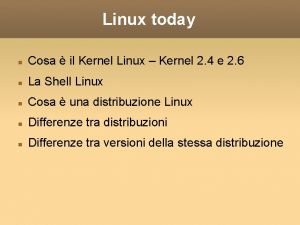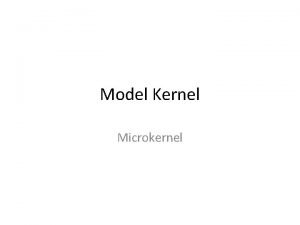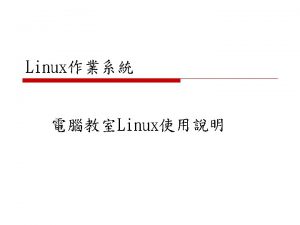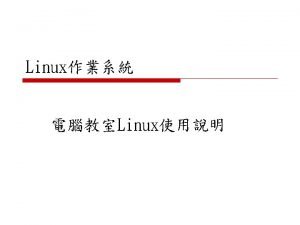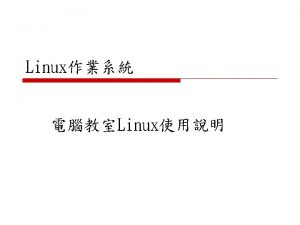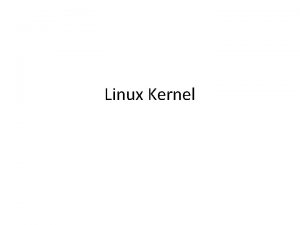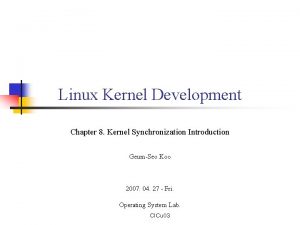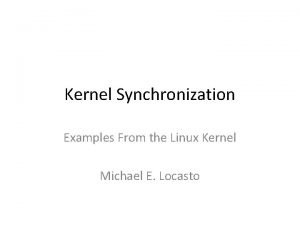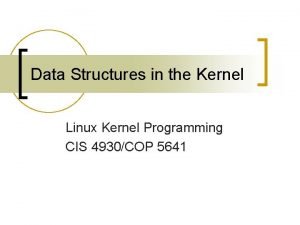Introduction to the Linux Kernel Linux is a















- Slides: 15

Introduction to the Linux Kernel

Linux is a Unix-like system, but it is not Unix Although Linux borrows many ideas from Unix and implements the Unix API, it is not a direct descendant of the Unix source code like other Unix systems

a free or open source software The Linux kernel is licensed under the GNU General Public License (GPL) version 2. 0



The Linux OS The basics of a Linux system are – the kernel, – C library, – toolchain, – basic system utilities – X Window system – GNOME (Window manager)

kernel components • interrupt handlers to service interrupt requests, • a scheduler to share processor time among multiple processes • a memory management system to manage process address spaces, • system services such as networking and interprocess communication

kernel-space • The kernel typically resides in an elevated system state compared to normal user applications. – a protected memory space – full access to the hardware • This system state and memory space is collectively referred to as kernel-space

user-space They see a subset of the machine’s available resources and can perform certain system functions

System calls • Applications running on the system communicate with the kernel via system calls • An application typically calls functions in a library • When an application executes a system call, we say that the kernel is executing on behalf of the application.

Interrupts • When hardware wants to communicate with the system, it interrupts the kernel • A number identifies interrupts and the kernel uses this number to execute a specific interrupt handler

Interrupt handling • To provide synchronization, the kernel can disable interrupts—either all interrupts or just one specific interrupt number. • the interrupt handlers run in a special interrupt context that is not associated with any process.

Summary: Executing contexts • In user-space, executing user code in a process • In kernel-space, in process context, executing on behalf of a specific process • In kernel-space, in interrupt context, not associated with a process, handling an interrupt

Linux Versus Classic Unix Kernels • The Linux kernel is preemptive. • It does not differentiate between threads and normal processes.

Before We Begin Have fun
 Linux kernel linux security module m1
Linux kernel linux security module m1 Declare_tasklet
Declare_tasklet Linux kernel internals
Linux kernel internals Linux kernel map data structure
Linux kernel map data structure Linux kernel interrupts
Linux kernel interrupts Eclipse linux kernel
Eclipse linux kernel Bagian dari kernel linux
Bagian dari kernel linux Linux kernel hacking
Linux kernel hacking Lts kernel
Lts kernel Linux kernel hacking
Linux kernel hacking Linux kernel backdoor
Linux kernel backdoor Linux kernel synchronization
Linux kernel synchronization Linux kernel timeline
Linux kernel timeline Linux kernel block diagram
Linux kernel block diagram Build linux kernel with clang
Build linux kernel with clang Linux kernel memory map
Linux kernel memory map

